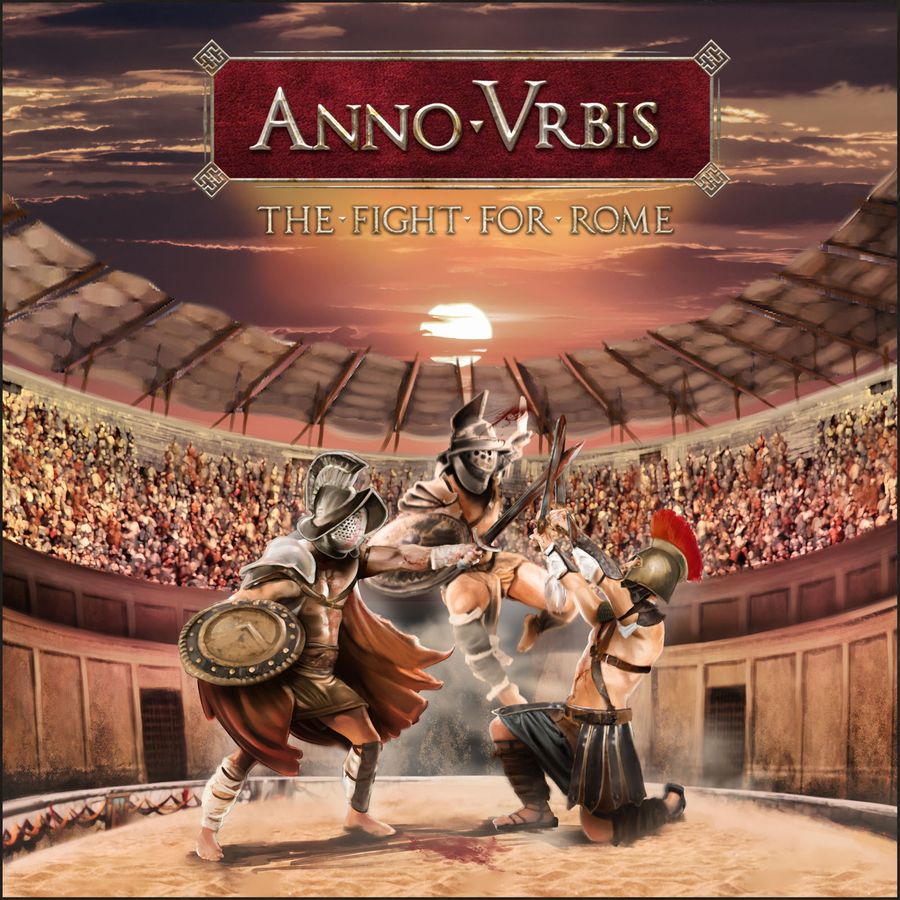Kickstart This! #125: Anno Urbis

Designers: Giovanni Franco, Carlo Maria Maucci, Andrea Romeo, Federico Stotani
Artists: Massimo Fratini (The Faceless, Hall of Fame, Sushi War: All You Can Hit!), Carlo Giannetti (Hall of Fame)
Publisher: Fengi Games
Genre/Mechanisms: area control, dice rolling, economic, grid movement, hand management, miniatures, worker placement
Funding Status: At the time of this posting, Anno Urbis is already fully-funded. Pledges currently total just over the initial funding goal with 6 days left to go on the campaign.
Player Count: 2-4
Solo Mode: no
Complexity: medium-heavy
Risk: high
What It’s About: Set in Ancient Rome, players vye for control of the hills and surrounding countryside, and once 12 influence are placed in Rome, the Arena Phase is triggered with a second board placed “floating” above the regular game board on cardboard supports.
How It Works: Anno Urbis is played over a series of rounds, until one of the following triggers the end of the game: a player completes 4 Hills of Rome (each Hill must have 3 influences of the same color), all influences have been placed, or a player has enough influences that they are “unreachable” by the other players.
During the game, player order changes according to cards played. At the start of the game, first player is determined by the first card drawn during territories setup. This player will take the first turn. At the end of each turn, the player who played the highest-numbered card becomes the new first player. During their turn, the active player can perform up to 3 game actions using Farm, Temple, and Barrack buildings. With Farm Actions, players choose one of the following options: take a resource card from the deck and add it to their hand, discard a card from their hand, or move any number of troops from one territory to an adjacent territory. With the Temple Action, the player plays one card they already own for every Temple owned. And with the Barracks Actions, for each Barracks owned, the player chooses one of the following options: create an infantry in an owned territory containing at least one settlement or one owned unit, upgrade an infantry to an elite in an owned territory containing at least one settlement or owned unit, or declare war against an army in the same area and start a Battle. After taking Building Actions, the active player can then use glory points to buy an influence cube on Rome (one glory point per influence, up to a total of three) and/or buy a Divinity Card using 2 glory points.
During a Battle, the following steps are completed in order: starting with the attacker, both players play cards from their hands, up to 1 for each owned Temple; players with level 3 Heroes can eliminate the highest ranking unit (except for level 3 Heroes) of the opposing army; Elites attack; and finally Mass Attacks trigger, and troops are eliminated from the area in a 1:1 ratio until an army is defeated. When a player wins a battle, they’ll gain 1 glory point if the opponent had 1-2 units in the area, two glory points if the opponent had 3-4 units in the area, and three glory points if the opponent had 5+ units in the area. If a victorious player had a Hero in the battle and it survived, that Hero increases one level. A defeated Hero loses a level and returns to the capital.
Once 12 influence have been placed in Rome, the Arena battle takes place between every Hero and their supporting gladiators. During each player’s turn, they can move each of their fighters and then perform every available attack. After the 7th turn, the player with the most points is declared the winner. The player who wins the Arena gains 1-2 glory points, depending on player count.
At the end of the game, each completed Hill with 3 settlements of the same color earns that player 1 glory point, and then the player with the most glory points is declared the winner.
Comparisons: Anno Urbis plays similarly to many games in the dudes on a map genre. Clash of Cultures and Merchants & Marauders always seem relevant, and some other popular, highly-rated titles with area majority mechanics include Blood Rage, Gaia Project, Scythe, Star Wars: Rebellion, Twilight Imperium, and War of the Ring. But the thing that really sets Anna Urbis is the Arena board. This is where Anna Urbis doubles down on being a DoaM, area control, and combat/skirmish game.
What Should I Pledge?:
$77 Standard Edition: the standard edition of the game and all unlocked stretch goals.
$110 Deluxe Edition: the deluxe edition of the game and all unlocked stretch goals. In the deluxe version, the 32 Elite Meeples and 72 Soldier Meeples have been upgraded to miniatures.
Add-Ons:
$17 Artbook
$21 Gens Iulia Pack: includes the Hero miniature and 16 Soldier miniatures of the Iulia faction.
$21 Gens Aemilia Pack: includes the Hero miniature and 16 Soldier miniatures of the Aemilia faction.
$21 Gens Valeria Pack: includes the Hero miniature and 16 Soldier miniatures of the Valeria faction.
$21 Gens Cornelia Pack: includes the Hero miniature and 16 Soldier miniatures of the Cornelia faction.
$28 Arena Pack: the required elements to play just the Arena Phase; includes 24 miniatures, 1 Board, Cards, Die, and the Rulebook.
$13 Buildings Pack: includes 4 Farm, 4 Barracks, and 4 Temple miniatures.
KS Exclusives:
The Deluxe version (which includes the Elite and Soldier miniatures) is a Kickstarter exclusive.
All-In Total: In the continental U.S., you’re looking at $110 for the Deluxe Edition, $13 for the Buildings pack, and $14 in shipping for a total of $137.
Anno Urbis completes its Kickstarter on Friday, November 15th and tentatively ships in November 2020.